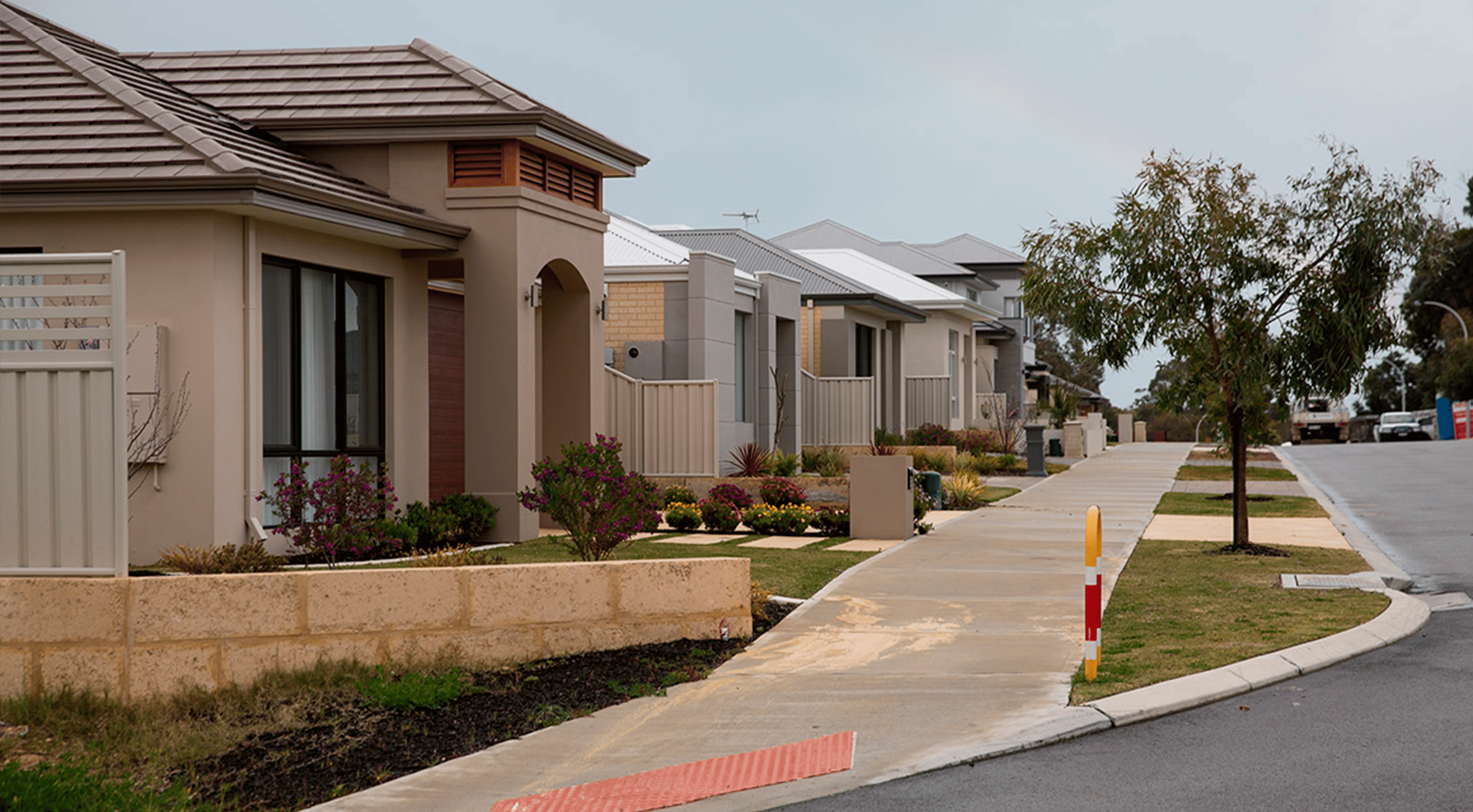Features > Property News & Insights > Investment News
RBA unlikely to raise interest rates after steady inflation numbers

KEY POINTS
- Inflation in Australia rose 1.0% over the June quarter of 2024, in line with market expectations
- Although annual inflation has risen slightly to 3.8%, the Reserve Bank of Australia is unlikely to raise rates at its August meeting next week, as the inflation data was largely in line with the central bank’s own expectations
- More certainty that the path of interest rates is now down, coupled with greater borrowing power from tax cuts, is likely to spur more buyers and investors to enter the property market
The Reserve Bank of Australia (RBA) is unlikely to raise interest rates again at its August board meeting following the release of key inflation data from the Bureau of Statistics.
The quarterly Consumer Price Index (CPI) rose 1.0% over the three months to the end of June.
This was largely in line with market expectations and, more importantly, the RBA’s own forecasts, meaning the chances of another rate hike are extremely slim.
Renewed confidence that the next move by the Reserve Bank will be an interest rate cut, not a hike, is likely to spur more demand in the property market, with potential buyers now more certain about the path for interest rates.
The details
According to the ABS, the Consumer Price Index rose 1.0% over the June quarter, meaning that annual inflation in Australia is 3.8%, ticking up slightly from 3.6% in the previous quarter.
The most significant price rises this quarter were in the Housing (+1.1%), Food and non-alcoholic beverages (+1.2%), Clothing and footwear (+3.1%), and Alcohol and tobacco (+1.5%) categories.
A key part of the “Housing” category are rents and the ABS says rental prices rose 7.3% over the 12 months to the end of June.
Although that rent price growth is down from 7.8% in the March quarter, the ABS says the high figure “continues to reflect low vacancy rates and a tight rental market.”
The future of interest rates
While there was a slight rise in annual inflation this quarter, this was largely expected and in line with the RBA’s own forecasts.
The central bank has pledged to do whatever it takes to return inflation in Australia to its mandated 2-3% target by the end of 2025.
However, the RBA really only has one tool at its disposal to dampen demand in the economy—the movement of interest rates. It has already raised rates no less than 13 times since May 2022 in a bid to squash an inflation breakout, taking the official cash rate from 0.1% to 4.35%—the highest level in more than 12 years.
“Well, I think these (inflation) numbers are good news,” said AMP’s Chief Economist Shane Oliver.
“In fact, they're roughly aligned with RBA expectations; 3.8% for the quarter was their expectation.
“Inflation was not going to come down in a straight line, but it is coming down.
“The Reserve Bank is not going to be raising interest rates (at its August board meeting) next week,” Dr Oliver told ABC News.
Trimmed mean
Shane Oliver also pointed to the fact that the so-called “trimmed mean” measure of inflation, which strips away some of the more volatile items in the basket of goods and services the ABS measures, is heading down.
Trimmed mean is the RBA’s preferred measure of inflation rather than the so-called “headline rate.”
Another reason the RBA would have “no justification” in raising rates “on the back of these numbers,” according to Shane Oliver, is that the full impact of the Federal government’s cost-of-living measures, unveiled in the May budget, is only now starting to wash through the economy.
“They (the RBA Board) also have to allow for the next three months; inflation is going to come down quite a bit because of the cost-of-living measures.
“In fact, we may see inflation over the next three months fall below 3%.”
It’s a point Federal Treasurer Jim Chalmers was keen to emphasise in a press conference, where he sent a none-too-subtle message to the independent Reserve Bank that another rate rise was not justified.
“We have designed the substantial and meaningful but responsible cost-of-living relief that's rolling out right now,” Dr Chalmers said.
“Every taxpayer is getting a tax cut.
“Every household is getting energy bill relief.
“There's cheaper medicines, and there's more rent assistance on the way as well.
“We know from the ABS today that our cost-of-living policies are taking the edge off these cost- of-living pressures rather than adding to them.”
Implications for the housing market
In the immediate aftermath of the release of the June quarter inflation numbers, the Australian stock market rallied, and the Aussie dollar dropped, fuelled by the prospect of lower, not higher, interest rates.
While there are signs that some of the steam has been coming out of the national housing market in recent months, with the rate of price growth slowing, more certainty that the next rate move by the RBA will be down—not up—is likely to spur potential buyers and investors currently sitting on their hands to enter the market.
These potential buyers are also beneficiaries of the tax cuts that came into force from July the 1st, boosting their take-home pay, but more importantly, giving them increased borrowing power.
A recent analysis suggested this could mean an extra borrowing capacity of about 4% for a median wage earner of $70,000, through to more than 5% for higher income earners.
Mortgagees who have been suffering under the pressure of high interest rates will also be breathing a bit easier today and can have some assurance that by this time next year their variable interest rates will be lower.
This means the rate of so-called “distressed sales”—which was already low by historical standards—is not likely to rise much more.
If you were hanging around waiting for a property “bargain” with home prices falling significantly, I’m afraid the latest inflation numbers confirm you are going to be disappointed.
Stay Up to Date
with the Latest Australian Property News, Insights & Education.




.png?width=292&height=292&name=Copy%20Link%20(1).png)
 SIGN UP FOR FREE NEWSLETTER
SIGN UP FOR FREE NEWSLETTER
%20(1).png)

.png)





.jpg?width=1920&height=1080&name=Warning%2c%20You%20Might%20Be%20Facing%20Higher%20Taxes%20Soon%20(1).jpg)





.png?width=1920&height=1080&name=Rate%20Drops%20Signal%20BIGGEST%20Property%20Boom%20in%20DECADES%20(1).png)

.jpg?width=1920&height=1080&name=Labor%20vs%20Liberal%20These%20Housing%20Policies%20Could%20Change%20the%20Property%20Market%20Forever%20(1).jpg)
.jpg?width=1920&height=1080&name=QLD%20Slashes%20Stamp%20Duty%20Big%20News%20for%20Investors%20%26%20Home%20Buyers%20(1).jpg)
.jpg?width=1920&height=1080&name=Trump%20Just%20Slapped%20Tariffs%20%E2%80%93%20Here%E2%80%99s%20What%20It%20Means%20for%20Australia%20(1).jpg)
.jpg?width=1920&height=1080&name=Federal%20Budget%202025%20More%20Debt%2c%20No%20Housing%20%E2%80%93%20Here%E2%80%99s%20What%20You%20Need%20to%20Know%20(1).jpg)
.jpg?width=1920&height=1080&name=Australias%20Housing%20Crisis%20is%20about%20to%20get%20MUCH%20Worse%20(New%20Data%20Warns).jpg)
%20(1).jpg?width=1920&height=1080&name=Australias%20RENTAL%20CRISIS%20Hits%20ROCK%20BOTTOM!%20(2025%20Update)%20(1).jpg)
%20(1).png?width=1920&height=1080&name=Is%20Adelaide%20Still%20a%20Good%20Property%20Investment%20(2025%20UPDATE)%20(1).png)
.jpg?width=1920&height=1080&name=RBA%20Shocks%20with%20Rate%20Cuts!%20What%E2%80%99s%20Next%20for%20Property%20Investors%20(1).jpg)
%20(1).jpg?width=1920&height=1080&name=I%20Predict%20The%20Feb%20Rate%20Cut%20(My%20Price%20Growth%20Prediction)%20(1).jpg)
.png?width=1920&height=1080&name=Why%20Property%20Prices%20Will%20Rise%20in%202025%20Market%20Predictions%20(1).png)
.jpg?width=1920&height=1080&name=Why%20Investors%20Are%20Choosing%20Apartments%20Over%20Houses%202%20(1).jpg)
.jpg?width=1920&height=1080&name=Why%20Rate%20Cuts%20Will%20Trigger%20A%20Property%20Boom%20(1).jpg)
.jpg?width=1920&height=1080&name=Retire%20On%202Million%20With%20One%20Property%20(Using%20SMSF).jpg)
.jpg?width=1920&height=1080&name=4%20Reasons%20Why%20You%20Should%20Invest%20in%20Melbourne%20Now%20(1).jpg)
%20(1).jpg?width=1920&height=1080&name=Old%20Property%20vs%20New%20Property%20(Facts%20and%20Figures%20Revealed)%20(1).jpg)
%20(1).jpg?width=1920&height=1080&name=Will%20The%20New%20QLD%20Govt%20Create%20a%20Property%20Boom%20or%20Bust%20(My%20Prediction)%20(1).jpg)
%20Scott%20Kuru%20(1).jpg?width=1920&height=1080&name=Inflation%20Hits%20Three-Year%20Low%20(Will%20RBA%20Cut%20Rates%20Soon)%20Scott%20Kuru%20(1).jpg)
.jpg?width=1920&height=1080&name=How%20to%20Buy%20Investment%20Property%20Through%20SMSF_%20The%20Ultimate%20Guide%20(1).jpg)
.jpg?width=1920&height=1080&name=Victoria%20Slashes%20Stamp%20Duty%20Melbourne%20Set%20to%20Boom%20Scott%20Kuru%20(1).jpg)
.png?width=1571&height=861&name=Are%20Foreign%20Buyers%20Really%20Driving%20Up%20Australian%20Property%20Prices%20(1).png)
.jpg?width=1920&height=1080&name=The%20Single%20Factor%20That%20Predicts%20Property%20Growth%20Regions%20(1).jpg)
%20Scott%20Kuru%20(1).jpg?width=1920&height=1080&name=My%20Prediction%20On%20Rates%20%26%20Negative%20Gearing%20(Market%20Crash)%20Scott%20Kuru%20(1).jpg)

-1.png?width=1920&height=1080&name=Major%20Banks%20Cut%20Rates%20Will%20RBA%20Follow%20Suit%20(Sept%20Rate%20Update)-1.png)
%20Scott%20Kuru-1.png?width=1920&height=1080&name=Rate%20Cut%20Coming%20What%20New%20Zealands%20Move%20Means%20for%20Australia%20(Sept%20Prediction)%20Scott%20Kuru-1.png)
%20(1).jpg?width=1920&height=1080&name=Buy%20when%20the%20interest%20rates%20are%20high!%20(Why%20you%20must%20buy%20now!)%20(1).jpg)
.jpg?width=1920&height=1080&name=Carms_Revised%20Taxes%20Due%20Aug%209%20YT%20Thumbnail02%20(1).jpg)
.jpg?width=1920&height=1080&name=Carms_Too%20Little%20Too%20Late%20Aug%207%20YT%20Thumbnail01%20(1).jpg)









.jpg?width=1920&height=1080&name=Carms_Rate%20Drop%20In%20July%20Jun%2010%20YT%20Thumbnail02%20(1).jpg)
.jpg?width=1920&height=1080&name=Carms_Own%20a%20Property%20V6%20Jun%205_YT%20Thumbnail%20(1).jpg)









.png?width=1920&height=1080&name=Artboard%201%20(3).png)






.jpg?width=1920&height=1080&name=YT%20thumbnail%20%20(1).jpg)

